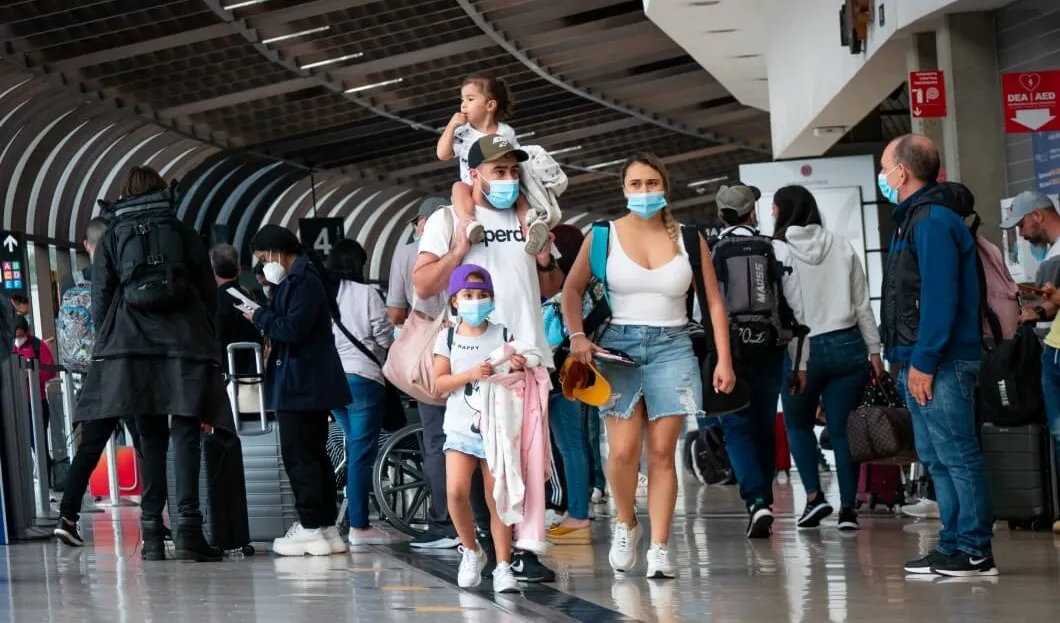
Latin America is preparing to finally heal its injured economy through tourism restart, but the competition looks fierce, and it will take place amid a rough battle against the coronavirus throughout the entire region.
Brazil: Tourism as an Economic Engine
Brazil welcomed 6.3 million international tourists in 2019, of which 3.6 million came from South American countries. Recently, Minister of Tourism Gilson Machado Neto told reporters that this industry, which employs 7 million Brazilians, has the potential to grow further and become “the economic engine” of the country.
To offset the losses, the second country in the world hardest hit by the COVID-19 pandemic in terms of deaths (only behind the U.S.) is in its final talks to reopen 45,000 hotels, hoping to reduce the historical collapse of tourist activities, which was down to 36.7% in 2020.
Thiago Marques, marketing coordinator of the state of Ceará, one of the regions of Brazil best known for its beaches, believes that visitors should know that “although almost everything is working in the country, there are rules”.
Depending on the number of cases and the situation in each state, hotels, parks and restaurants, for example, “have a capacity of 50% in some cities, and 80% in others, and the same thing applies to opening hours because while the reactivation needs to happen, we also have to give visitors confidence and security,” emphasized Marques.
Chile: Patiently Working on Tourism Restart
Chile has become a model for having one of the highest vaccination rates, with more than 9.2 of its 19 million inhabitants having been fully vaccinated; however, while it is tremendously important to reactivate tourism, today the country is open but still with certain entry restrictions. For example, right now foreign tourists must spend about 10 days in quarantine and this is very frustrating.
As the coronavirus pandemic slows down, the country is getting ready to fully open its borders and welcome the almost 5 million visitors who arrive in Chile every year.
In 2022, a series of face-to-face international activities will take place to promote tourism in the country and there is a hope to increase the total number of visitors by 5%.
Argentina: Leading the Revival
Ricardo Sosa, Executive Secretary of the National Institute for Tourism Promotion of Argentina, was clear in stating that his country wants to “lead the reactivation of tourism in Latin America.”
In Spain, during his presentation at FITUR, Sosa assured that “the companies informed us that there is a pent-up demand for the entire region, so we are working with a medium and long-term perspective.”
Argentina was also present at the ANATO fair as an invited guest, in which it was awarded for the campaign carried out this summer, where more than 15 million tourists were able to travel domestically without registering new outbreaks.
Colombia: Ready to See Record Figures
2019 was a year of record figures for tourism in Colombia. The number of international tourists who visited the country was 4,515,932, representing a growth of 2.7% compared to 2018.
Despite this, “we have faced an unprecedented situation which forced us to act in a timely manner to find options that would allow travel agencies to survive and keep their companies afloat,” said María Ximena Lomba, Minister of Trade, Industry and Tourism.
In a recent survey carried out by ANATO it was shown that companies and businesses have been forced to lay off 36% of their employees.
For the tourism restart, the industry is following the guidelines of the Ministry of Health and is clear that “attracting foreign tourists will depend not only on the vaccination campaigns in Colombia, but also on what happens in their countries of origin,” said the Minister.
At the moment, the “Analysis of Hotel and Flight Prices Variation”, carried out by consulting firm KPMG, shows that “there are great opportunities in offering relaxing trips, without meeting schedules and that connect the traveler with the destination, in addition to micro-vacations and spaces that allow working and traveling at the same time.”
Peru: Setting Standards in Biosafety
According to forecasts made by the Ministry of Foreign Trade and Tourism, Peru expects to welcome 1.37 million visitors by the end of 2021, and by 2022, the figure will rise to 1.94 million.
Beyond the country’s attractive thousand-year-old history, about 30 destinations have received the Safe Travels stamp from the World Travel and Tourism Council (WTTC), which certifies that they comply with all international health and biosafety standards and protocols.
Experts point out that the coronavirus made the industry more resilient and has led to rethinking it in a safer and more sustainable way.










